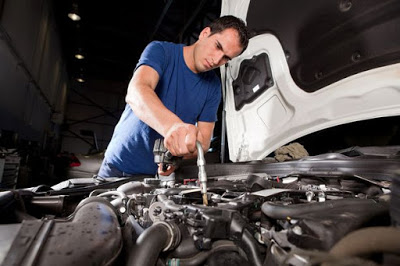 Maintaining a car is not exactly difficult, but with so many things to think about and to check, it is easy to become overwhelmed. This is where a car maintenance checklist comes in handy, as it can help guide you through the process of keeping your car running and looking its best. When making a checklist, you can even personalise it to fit your exact needs. Be sure to include both regularly scheduled maintenance items and things that need checked more frequently.
Maintaining a car is not exactly difficult, but with so many things to think about and to check, it is easy to become overwhelmed. This is where a car maintenance checklist comes in handy, as it can help guide you through the process of keeping your car running and looking its best. When making a checklist, you can even personalise it to fit your exact needs. Be sure to include both regularly scheduled maintenance items and things that need checked more frequently.
Tyres
Regular checks will help extend the life of your tyres. Tyres wear down gradually making it important to become aware of the condition they are in before you hit the road. Proper tyre maintenance requires three things: checking for wear, maintaining proper pressure and performing a periodic rotation and balance.
Check Tread Wear
To check the tread wear, carefully look at the tyre to determine if there are uneven patches of bald spots. If the outer or inner part of the tread is worn significantly, this indicates the tyres need to be rotated or the car itself needs aligned. If the centre of the tyre shows more wear, check the pressure as this can mean the tyre is over-inflated.
Check Pressure
Too much pressure can cause the tyre to lose contact with the road. Too little pressure can result in a flat tyre, or even a blowout. To check tyre pressure, first look at the sticker on the inside of the driver’s doorjamb. The sticker will indicate the proper PSI for your exact vehicle. Using a manual, digital or dial gauge to determine the amount of pressure in the tyre and compare it to the recommended level. Inflate, or deflate as needed. Tyre gauges are inexpensive and available at most auto part stores
Rotate and Balance
Having the tyres regularly rotated and balanced is optimal for keeping tyres in good condition. Many manufacturers recommended having this done every 10 000 to 12 000 km or every six months.
Check Fluids
A car uses several different types of fluids to keep the components operating efficiently. Luckily, checking these fluids is simple and takes just a few minutes. When refilling or changing fluids, refer to the vehicle’s owner manual to determine the correct type. Oil and other fluids should be checked every couple of weeks, or even sooner if the car is driven quite frequently. Oil changes are recommended roughly every 10 000 to 13 000 km while brake fluid, transmission fluid, power steering fluid and coolant should be changed every 45 000 to 50 000 km. If any of the fluids appear contaminated, or watered-down, a change should take place sooner.
Check the Belts and Hoses
Belts and hoses keep the engine and other components such as the alternator and A/C compressor running properly. Over time and when exposed to extreme conditions, these belts and hoses become worn down. To check the hoses, squeeze them with your thumb and forefinger as close to the clamps as possible. The hoses should be firm, yet pliant. If you feel soft or mushy spots, it is time for a replacement. Also, check for nicks, bulges and cracks. When checking belts, look for cracks, splits or frayed spots. If the belt has a glazed over look, it is at risk of overheating and snapping.
Check the Coolant System
The coolant system keeps the engine from overheating by circulating coolant while the car is running. If there is a lack of coolant, or an inadequate ratio of water and coolant, you run the risk of the engine overheating which can lead to significant problems. Most vehicles require a 50/50 ratio of water and coolant. This can be checked easily with a test strip or tester bulb found at auto part stores. Check the coolant weekly, but take care to make sure the car is cooled down before removing the radiator cap. Failure to do so can result in serious burns.
Check the Battery
Most car batteries are designed to last for several years. Even new batteries, however, are prone to corrosion build-up on the terminals. Check the battery every couple of weeks. Look for corrosion around the terminals. If this exists, use a wire brush to scrub away as much as possible. Check the cell level of the battery as well. Add distilled water as instructed according to the battery’s owner’s manual. Take a second to check that the terminals are secure and tight. If the vehicle will be parked for more than a few days, hook the battery to a trickle charger to prevent it from losing its charge.
Go Over the Exterior
When washing the car, or filling it up with petrol, inspect the exterior. Check for scratches or dings. If there is tar build-up, wash it away to prevent it from damaging the paint. Check all of the lights to ensure they are operating properly. Inspect the windscreen wipers to determine if they need replaced.
Maintaining a vehicle does not have to be difficult. When you know what to check for, the process is simple. Keeping a schedule comes in handy, but you can also perform the maintenance at one time. For instance, when you get your oil changed, check all other fluids, along with the belts and hoses.
Check out Gumtree for some more Auto Tips Guide

